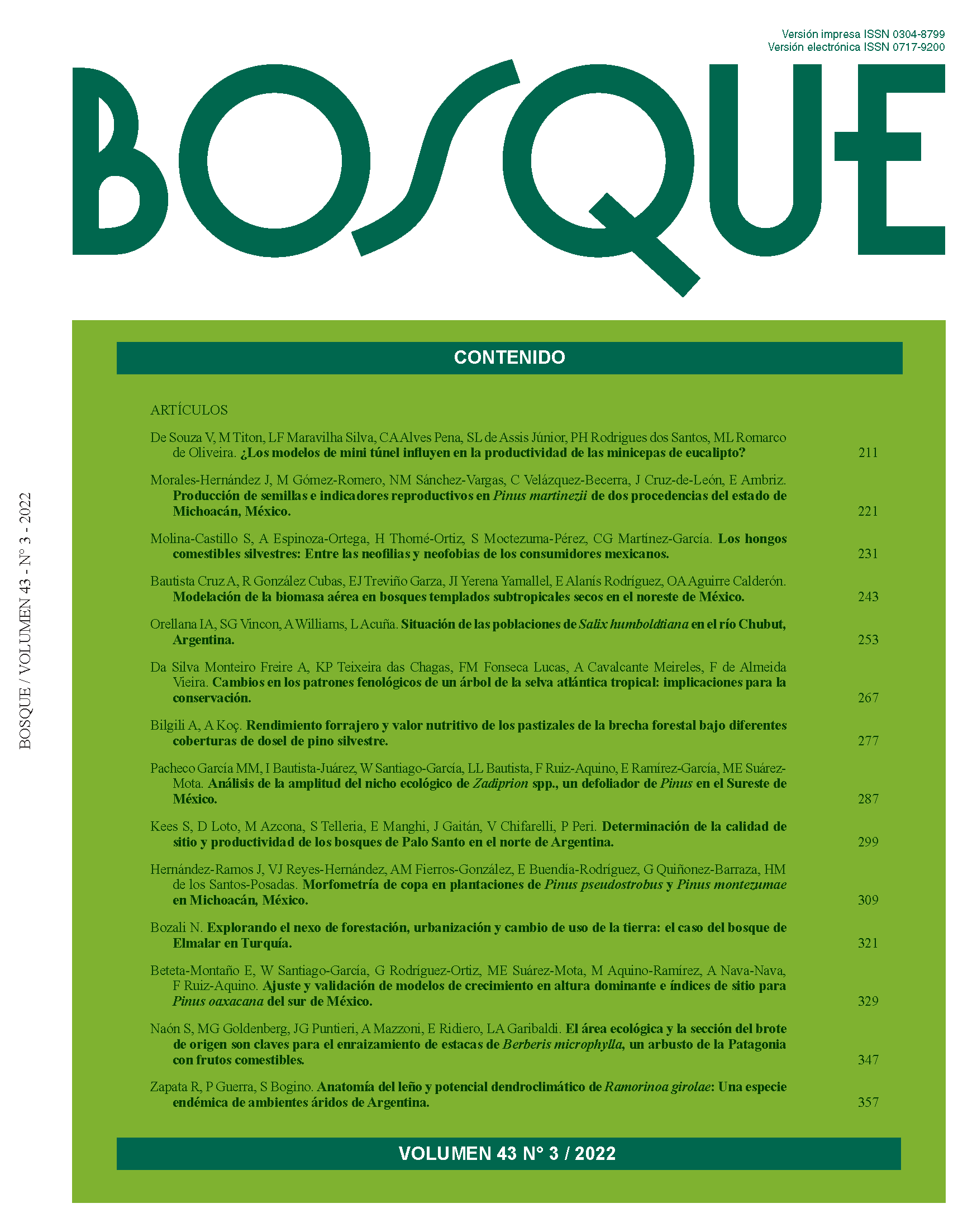Ajuste y validación de modelos de crecimiento en altura dominante e índices de sitio para Pinus oaxacana del sur de México
Contenido principal del artículo
Resumen
Los modelos de índice de sitio permiten caracterizar la productividad del rodal y definir estrategias de manejo para cumplir objetivos de producción y conservación de los recursos forestales. El objetivo de este estudio fue ajustar y validar modelos de crecimiento en altura dominante e índice de sitio para Pinus oaxacana. La base de datos se derivó de 4 inventarios en 44 parcelas permanentes de muestreo y 58 parcelas temporales, establecidas en rodales coetáneos de Ixtlán de Juárez, Oaxaca, México. Los datos fueron particionados aleatoriamente en subconjuntos de 50 %, 60 %, 70 % y 80 % para los ajustes y los datos restantes para cada subconjunto se emplearon en la validación cruzada. Los modelos que presentaron los mejores estadísticos de ajuste y validación fueron: en ADA, Korf anarmórfico b0 (70 %) y Korf polimórfico b1 (80 %); en GADA, Chapman-Richards (70 %) y Korf (80 %). El modelo GADA de Chapman-Richards presentó el comportamiento gráfico más adecuado y fue seleccionado para clasificar la productividad del sitio forestal. El modelo de altura dominante e índice de sitio aplicado en la cuantificación del potencial productivo de los rodales de P. oaxacana, constituye una herramienta de apoyo para el manejo forestal sustentable de esta especie en los bosques de Oaxaca, México.

